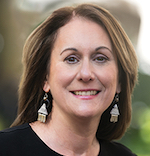 Laura Davidson Laura Davidson |
The secret of success in today’s travel business can be summed up in a single phrase: understanding your customer. This axiom is especially true when it comes to Gen Z-ers and Millennials, two generations with radically different approaches to travel. To reach, attract and win them over, travel marketers must understand everything about them from their booking habits to their service priorities and shift their methods to speak to them on their terms. In the PR world, this means fusing traditional public relations tactics with social media and influencer marketing to launch a wave of impact across a sea of multiple platforms.
We all know the power and purpose of traditional public relations. Thoughtful pitches, creative activations and coordinating firsthand experiences for editors take storytelling to a new level that resonates with audiences and forges a connection to a brand, destination or experience. These tactics turn into stories, strategic partnerships, cutting-edge campaigns and narratives that capture the essence of a brand and propel it into the spotlight.
But traditional PR only works up to a point when it comes to reaching Millennials and Gen Z-ers. It must be supplemented by the full box of social media tools including support from brands’ social media accounts, user-generated content and hashtag usage across a variety of social platforms. Equally important is the efficient use of influencers, a group that has evolved over the last five years into a high-impact, measurable, significant army of promotional partners. They give us enormously valuable and previously unimagined access to these younger generations by transforming travel trends into captivating viral moments, speaking to audiences on a personal one-on-one level and turning our clients into conversations.
| This article is featured in O'Dwyer's July '23 Travel & Tourism PR Magazine (view PDF version) |
Engaging the right influencers for a brand alongside traditional media helps to solidify key messages and also showcase offerings and experiences in a different way. For example, having a strong influencer marketing plan in place for campaigns surrounding openings or product launches generates real-time buzz and immediate interest among consumers. The instantaneous nature of social media can be capitalized on to spread the word quickly while starting to build wider interest. Print, digital and broadcast stories then supplement the social media exposure thereby swelling the wave of buzz and interest, resulting in a well-rounded, successful launch.
While “earned” media stories are being placed and influencers are driving the conversation on social media, brands additionally need support through organic posting and user-generated content. For example, influencers can launch a hashtag that ignites a social media movement that builds its own momentum. Consumers and other brands then join in, generating additional conversation and naturally expanding the audience. Before you know it, a single hashtag can have more than 500 billion views just on one platform, which we’re currently seeing with #adventuretravel on TikTok. Engaging influencers to launch a hashtag is also a strong tactic for targeting a niche audience. For example, brides and grooms (#bridal) currently has 8.7 billion video views and #destinationwedding has 1.3 billion video views on TikTok. And the journey doesn’t stop there … the continued use of social media amplifies the reach of a property or brand or offering, establishing it as a vibrant and strong leader within a niche community. Through captivating visuals, compelling stories and interactive engagement, a brand can find a new and/or larger audience. It’s a way that turns offerings into conversations, and conversations into happenings, which we see when consumers book trips or experiences that they saw on social media.
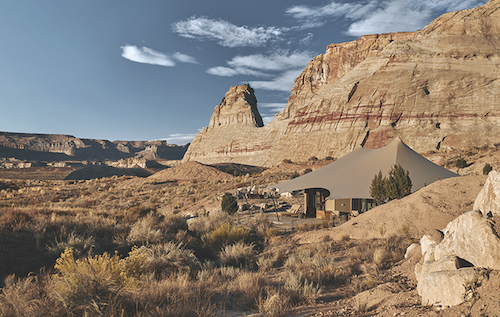 |
| Camp Sarika by Amangiri, located in Canyon Point, Utah. |
| Photo courtesy of Aman. |
In one example, it’s no secret that most hotels had to close their doors during COVID as travel came to a halt. In one instance, a hotel in the Utah desert used that unprecedented time to open. The resort’s landscape made it naturally achievable for guests to keep a distance from others and enjoy the outdoors in a safe way. In order to drive immediate awareness and buzz, the PR team hosted a notable social media influencer who is in alignment with the hotel brand, pre-opening.
This gave the new hotel the awareness it needed during such a crucial time and also gave the hotel image and video assets in order to launch an opening social media campaign on its own channel. Simultaneously, the PR team laid the groundwork for editorial stories to publish both pre-and post-opening, which supplemented the social media buzz and generated a successful well-rounded opening campaign. All these components led to a fully booked opening month with multiple buyouts and a strong series of bookings throughout the remainder of the year and into the following year.
As Millennials and Gen Z-ers grow older and more affluent, they’ll only grow in importance and begin to dominate the market as the Baby Boomer segment shrinks. Brought up traveling and treating travel as a necessity rather than a luxury, these younger generations bring enormous market potential, but only to those who speak directly to them through the trifecta of traditional PR, influencer, and social media marketing. To succeed as PR professionals we must understand our customers and be as quick to adapt to emerging communication trends as they are. The clock is ticking … TikToK.
***
Laura Davidson is CEO and Founder of Laura Davidson Public Relations.


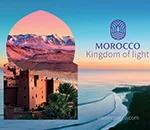 Weber Shandwick is providing PR and marketing communications services to the Moroccan National Tourist Office in New York.
Weber Shandwick is providing PR and marketing communications services to the Moroccan National Tourist Office in New York.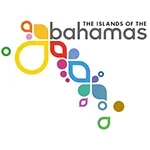 Finn Partners has filed its six-month contract with the Bahamas Ministry of Tourism, Investments & Aviation, which is worth $240K.
Finn Partners has filed its six-month contract with the Bahamas Ministry of Tourism, Investments & Aviation, which is worth $240K.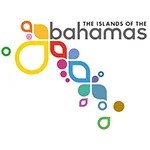 Weber Shandwick wrapped up its work for the Ministry of Bahamas at the end of 2023.
Weber Shandwick wrapped up its work for the Ministry of Bahamas at the end of 2023.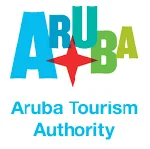 The Aruba Tourism Authority is boosting its budget 29.4 percent to $2.2M at Zeno Group, according to its 2024 contract, effective Jan. 1.
The Aruba Tourism Authority is boosting its budget 29.4 percent to $2.2M at Zeno Group, according to its 2024 contract, effective Jan. 1. As inflation continues to impact spending, consumers are revisiting their list of what they’re willing to spend more of their money on. Luckily for those in the travel industry, experiences seem to be trending up on the “splurge” list.
As inflation continues to impact spending, consumers are revisiting their list of what they’re willing to spend more of their money on. Luckily for those in the travel industry, experiences seem to be trending up on the “splurge” list. 


 Have a comment? Send it to
Have a comment? Send it to 
No comments have been submitted for this story yet.